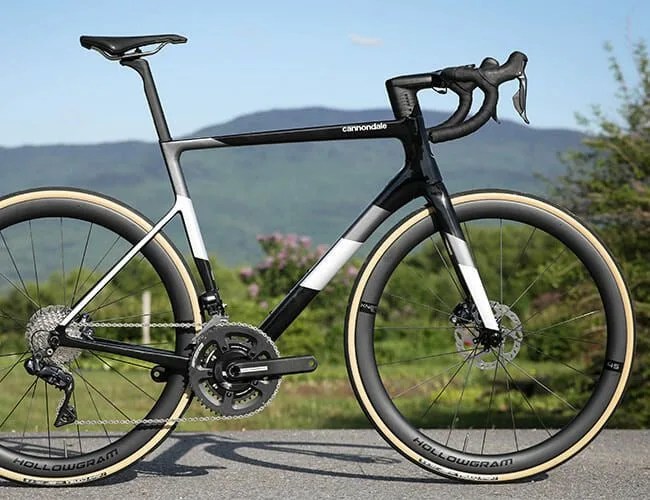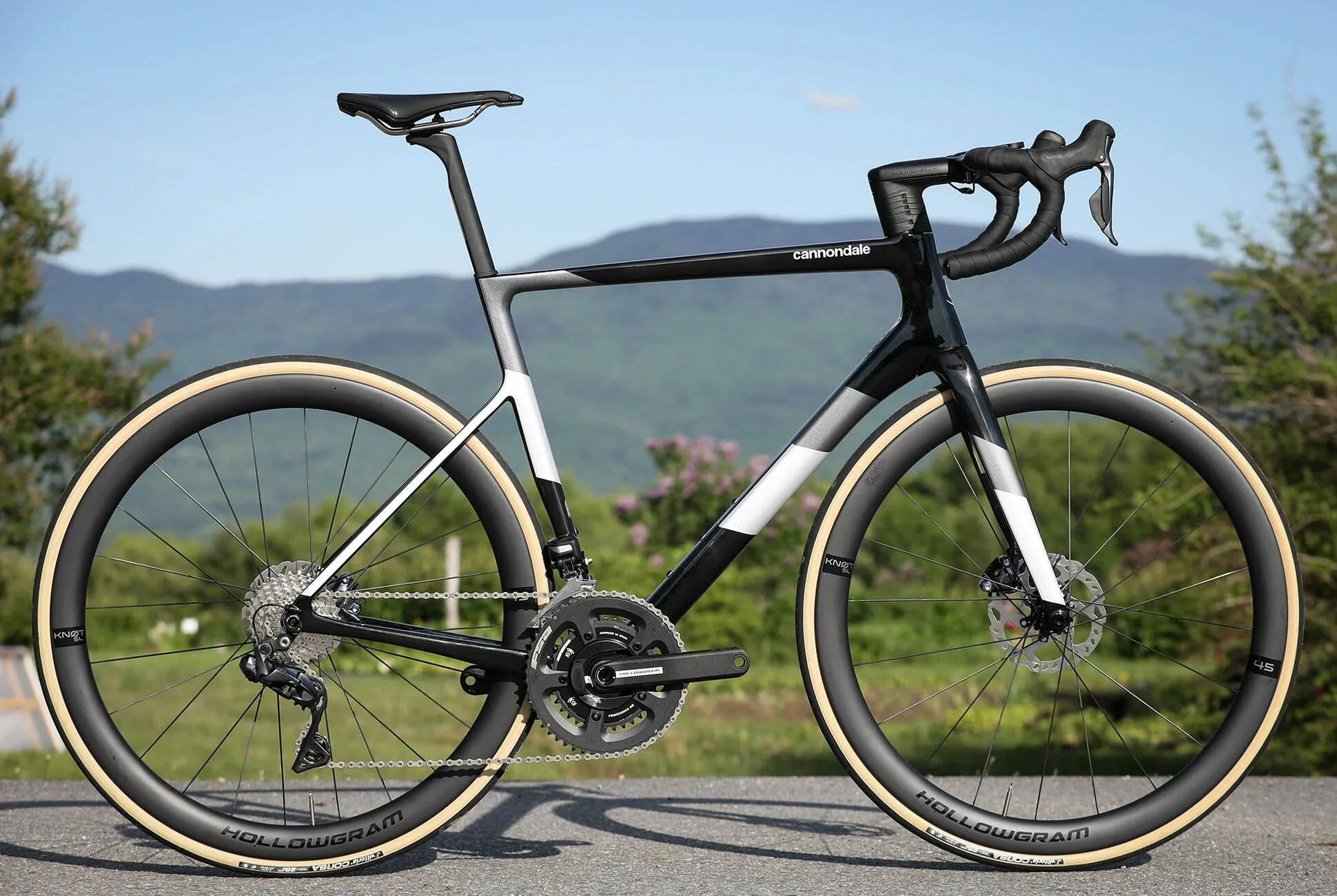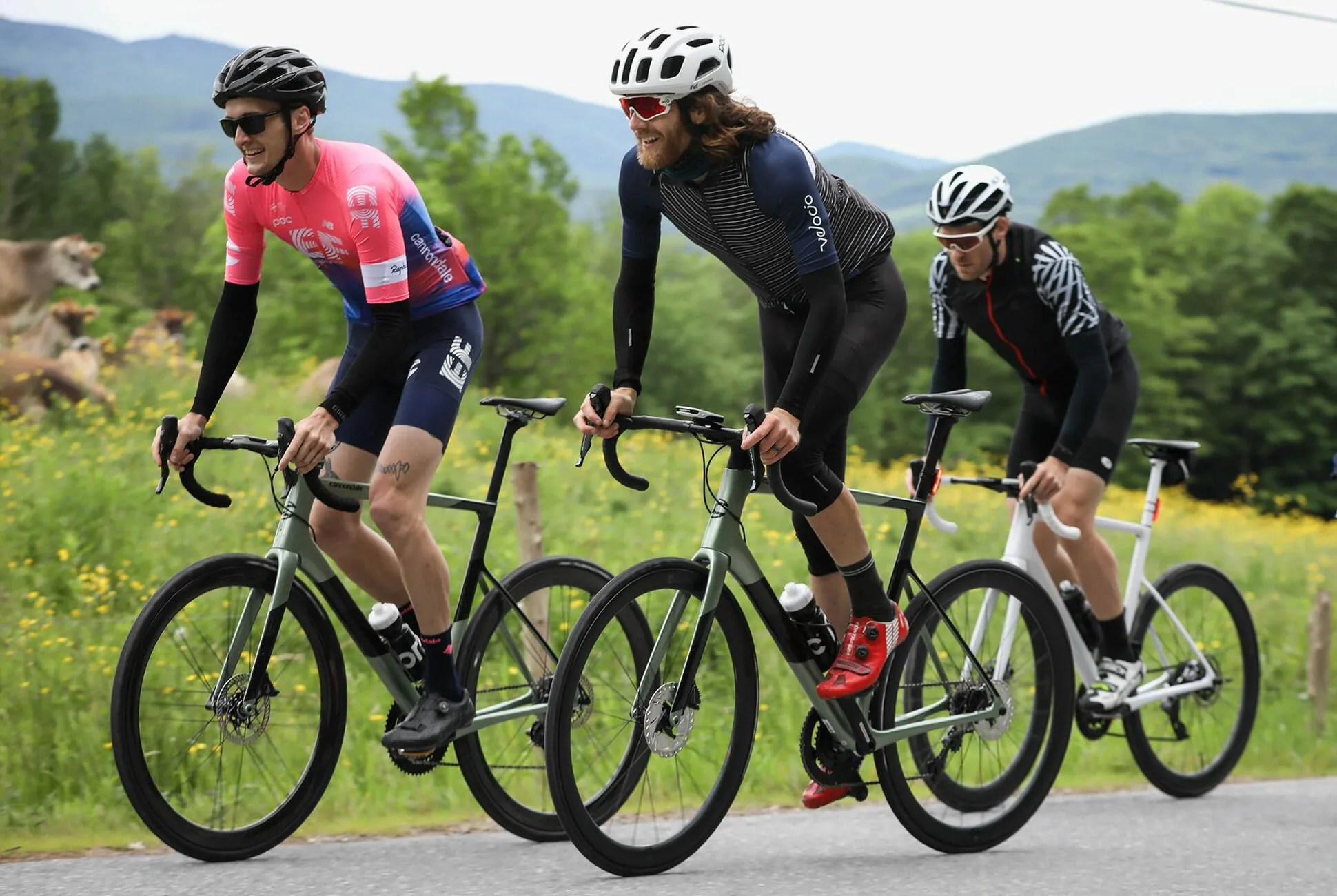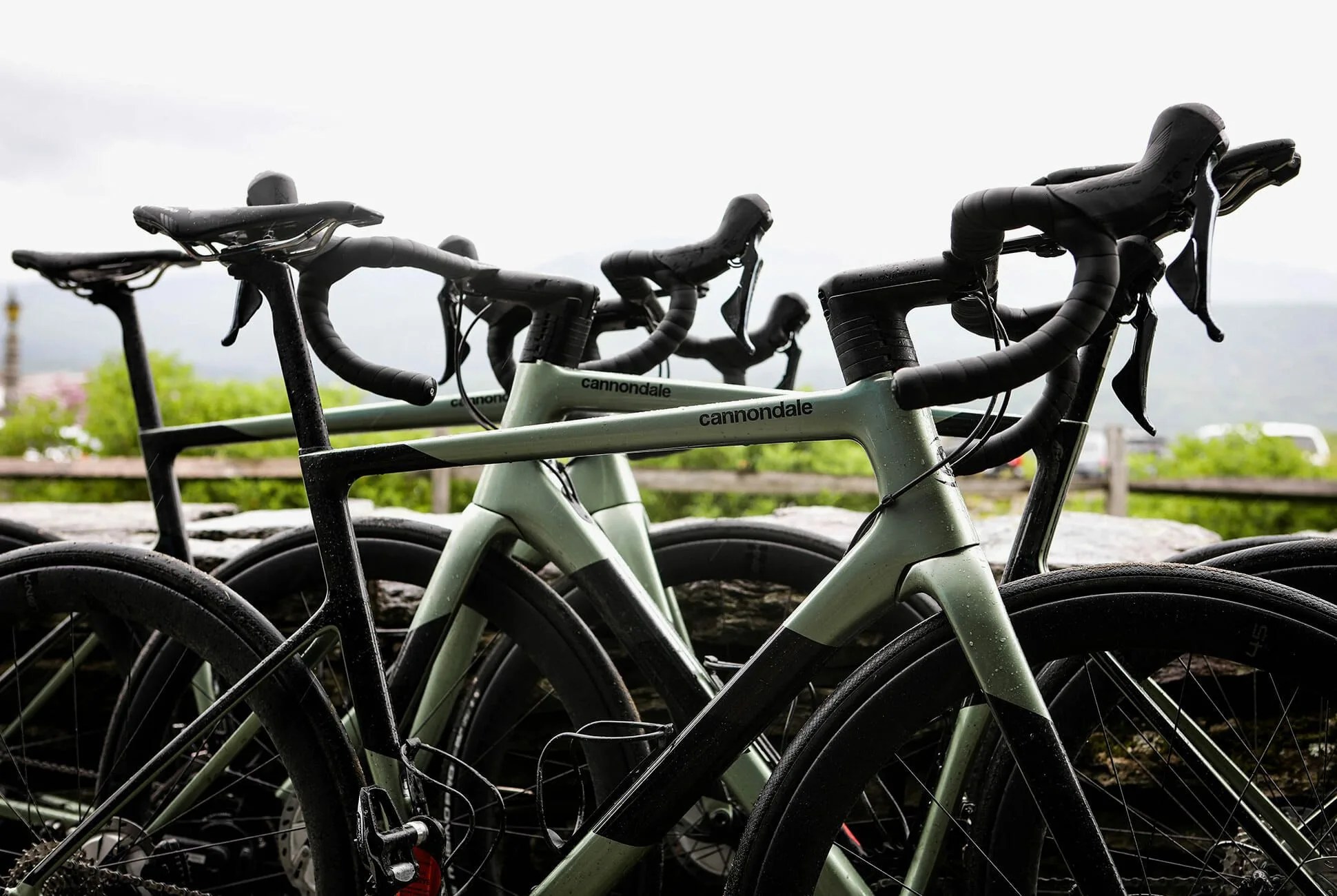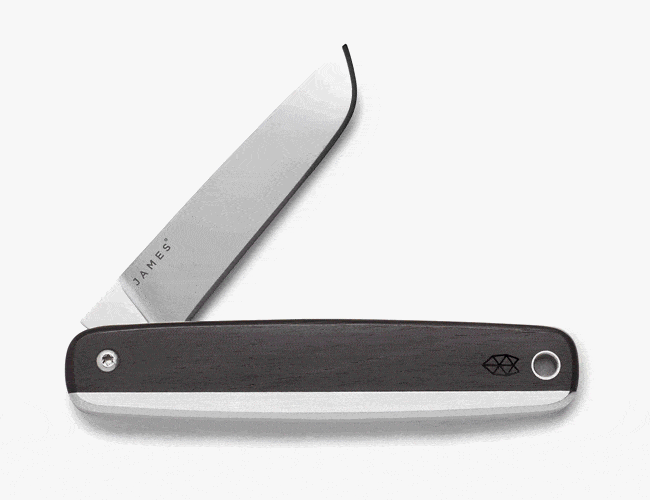3 photos
Margaret Thatcher is not someone who comes to mind often at bike launches. But Cannondale’s recent release of two new models reminded me of something she once said about there being two kinds of people: signposts and weathervanes. It turns out she was wrong, in almost every way, but also about bikes. Because Cannondale’s new rides are both.
The Connecticut company has consistently shown a commitment to innovation in off-road design, even if that means upending the aesthetic many expect by, say, chopping off the right leg of a fork as they did with their Lefty. On the tarmac, their System Six Evo has been the last bastion of horizontal top tubes, round tube shapes and damn good-looking road bikes.
Yet 2019 was the year for this bike to pivot a little, even if it kept pointing in fundamentally the same direction. For designers, this kind of change presents a huge challenge. Modern road bikes look a certain way for a reason, and that reason is that cylinders are slow. With the new SystemSix, Cannondale launched an aerodynamic pedal-powered crotch rocket that looks more like something out of Tron than the Tour de France. So, it was with much anticipation that we attended the brand’s launch event in Vermont, quite curious to see if Cannondale would finally put an end to the classic lines and unmatched handling of its SuperSix Evo.
Fortunately, the answer was no. The SuperSix remains light and stiff enough to deliver pro level climbing performance, adds some aerodynamic integration, disc brakes with thru axles (finally) and clearance for tires in excess of 30mm. It manages to do so without betraying the classic aesthetic of its forebears. It’s a road bike for people who want to go fast — and look good doing it.
How did Cannondale pull it off? Largely through integration of clever aerodynamic tweaks courtesy of new hire Dr. Nathan Berry and industry veteran Damon Rinard. Rinard and Berry’s marriage of experience and fresh perspective is unmistakable. The Knot handlebar and stem set-up provides a significant aerodynamic advantage over a round bar and stem, and it gives the bike a modern-enough look. Thankfully, Cannondale have managed to avoid too many proprietary parts or gregariously deep tubes. The bike uses a standard steerer tube, so should you wish to eschew aero gains in favor of your preferred position, you can run a regular bar and stem. There’s also a truncated aerofoil cross section to the headtube, helping the bike present a smaller frontal area and a dropped chainstay that saves watts and weight whilst increasing compliance. If you showed this bike to the Tour de France heroes of your youth, they’d recognize it as a bike not a motorcycle.
There are claimed wattage savings and stiffness numbers, but the real test of the SuperSix Evo isn’t in the wind tunnel, it’s riding with friends, sprinting for town signs and chasing your PR uphill. In all these tests, the SuperSix Evo performs admirably. It’s a bike that’s good enough for the Tour de France, but comfortable and snappy enough for your Saturday ride.
